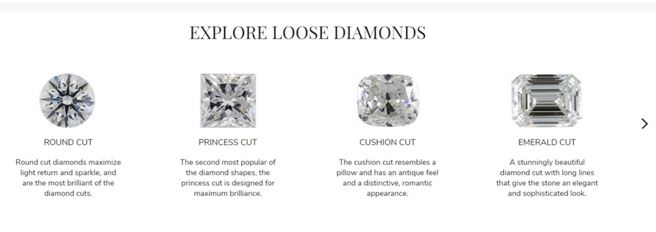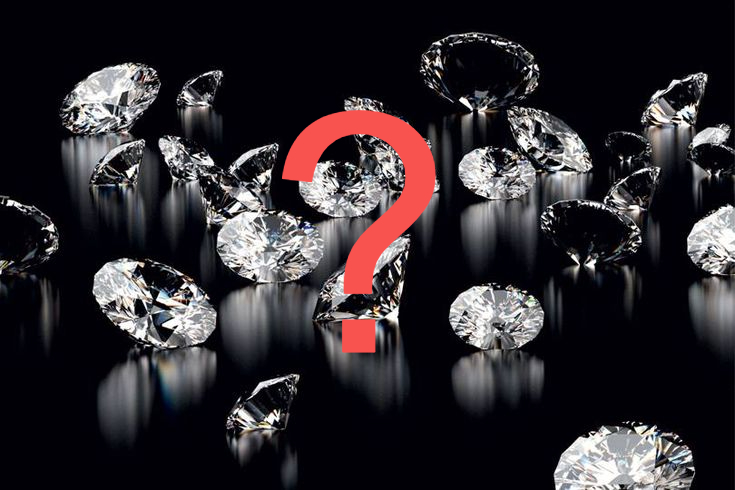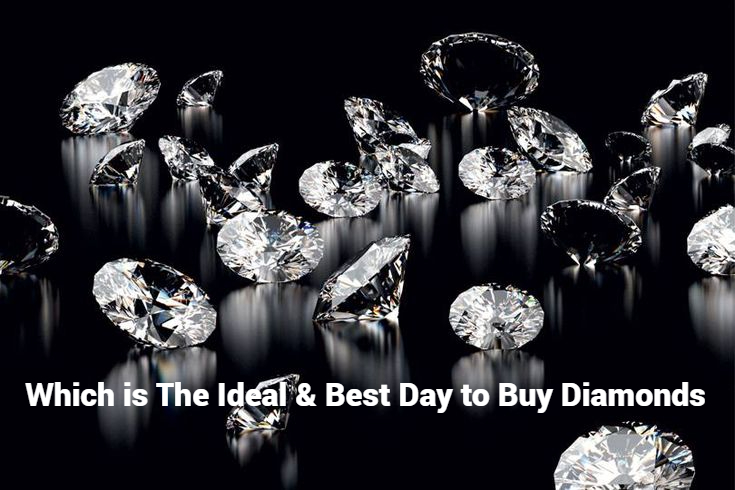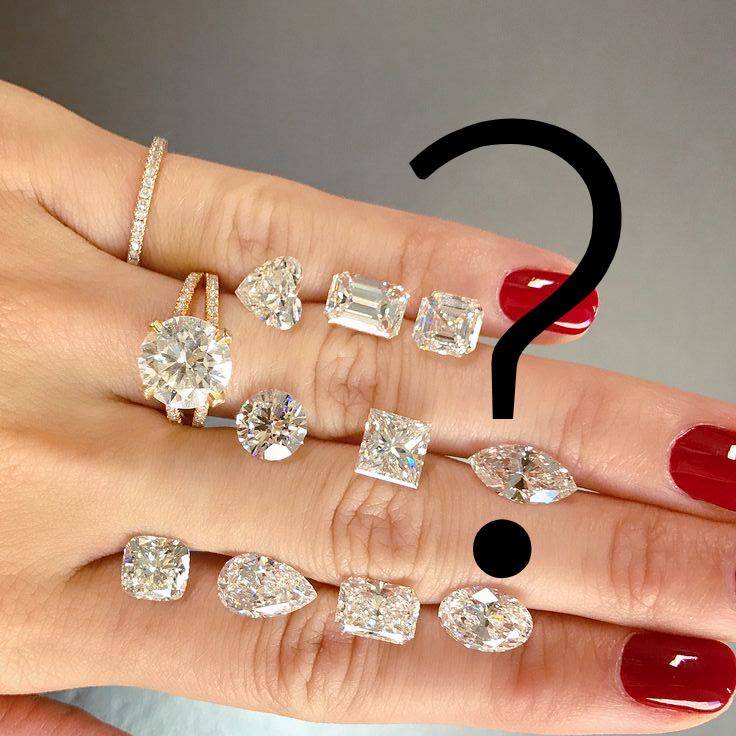Ageless, timeless, priceless; that is what the pear cut diamond is. This particular cut is a blend of two superb cuts: the round brilliant and the marquise cut. If you have ever heard of a diamond being described as ‘icy’ or ‘flowing like water,’ the pear cut embodies this description. This teardrop diamond is designed for brilliance and high sparkle. Due to its design, it can be worn as dangling earrings, or as a ring, pointing towards the hand or the length of the finger, depending on which the wearer prefers.
HISTORY
From its origins, the pear cut has been designed exquisitely to ensure that it always reflects brilliantly. The rise of the Pear cut was during the renaissance period and it was really popular among the people of that time.
Even though so many people could cut this shape out then, it was Louis Van Berquem (Lodewyk), in 1458, who was the first to cut the pear shape from the rough diamond. It was cut using a scaif (a diamond polishing wheel) which Lodewyk designed himself in Belgium. He meticulously cut this shape with absolute symmetry in the placement of the facets to ensure their brilliance and sparkle.
Lodewyk was the one who designed the Florentine Diamond, which was a 137 carat diamond stunner designed for one of the very popular families then.
After Louis Van Berquem’s technique, several others have been derived, but his own was the pacesetter for this particular cut.
After the Florentine Diamond, there have also been several other popular Pear cut diamonds which all pointed to the popularity of the cut during the period. Some of them include the Millennium Star, the Star of the Season and the Star of South Africa.
Popular people who have also worn pear-shaped diamonds at different times include Victoria Beckham, who wore a Pear shaped solitaire diamond engagement ring. Another popular person who wore this popular cut is Jessica Simpson, she even had two. Ariana Grande also wore a grande pear diamond engagement ring.
All of this shows that the Pear cut diamond has come a long way, with the perfect blend of antiquity and class over time.

THE PEAR SHAPED CUT
As originally designed by Louis Van Berquem, the Pear cut consists of 56 facets arranged in perfect symmetry. The symmetry of the facets is the core feature of the Pear cut. This is because it is first a brilliant-cut and must reflect light exceptionally.
Secondly, its peculiar shape must have excellent symmetry or else there would be several obvious dark areas, due to poor reflection and dispersion of light. These dark areas could very well affect the visual appeal of the diamond, depending on how bad the distortion is.
The parts of the pear cut include the head, the shoulder, the belly, the wing, and the apex of the point. In the cutting of the pear-shaped diamond, the head and the apex must be on a straight line. The shoulders and the wings should also be symmetrical, uniform, smooth curves, without any straight lines. The top of the pear-shaped diamond is supposed to be a semicircle, not fat or squatty. The squatty appearance may be due to the extra rough diamond that was added during the cutting process. This squatty appearance gives the diamond an ‘oversized’ or exaggerated appearance that shows it is out of proportion.
The Length to Width ratio of the pear shaped diamond is classically put at 1.40 -1.70. However, since the pear shape cut could be put to different uses, such as earrings or engagement rings, the width is sometimes dependent on the client. Generally, a pear cut for earrings would be narrower than for a ring. A narrower ring would appear longer than a wider ring. Some people would also consider a narrow pear cut as being ‘malnourished’ or unattractive when compared to a ‘chubby’ or wider cut. So, this is really down to the client.
Another feature of the Pear cut is the prong. While cutting the diamond, the apex or point should be set with a prong. This prong would serve two purposes:
First, would be to prevent chipping of the stone. As you must have observed, the point is the weakest and most likely point of damage to the pear-shaped diamond. Therefore when the diamond is set in a prong, this would reduce the likelihood of damage to it.
Also, most inclusions and impurities tend to settle at the point, because of the design of the pear cut. But the prong is useful in masking or hiding these inclusions which would be obvious in its absence.
RECOMMENDED DIAMOND CUT QUALITY
| DIAMOND PART/CHARACTERISTIC | ||||||
|
CUT GRADE |
TABLE (%) |
DEPTH (%) |
PAVILLION DEPTH (%) |
GIRDLE |
CULET |
LENGTH TO WIDTH RATIO |
|
EXCELLENT |
53 – 63 |
58 – 62 |
42 – 43
|
Very thin to Slightly thick |
None |
1.45 – 1.55 |
|
VERY GOOD |
52 Or 64. 0 – 65.0 |
56.0 – 57.9 or 62.1 – 66.0 |
41 – 41.9 or 43.1 – 43.9 |
Very Small |
1.40 -1.44 Or 1.56 -1.65 |
|
|
GOOD |
51 Or 66.0 -68.0 |
53.0 – 55.9 or 66.1 – 71.0 |
40 – 40.9 or 44 – 44.9
|
Thin to Thick |
Small |
1.35 – 1.39 Or 1.66 – 1.80 |
|
FAIR |
50 Or 69 -70 |
50.0 – 52.9 or 71.1 – 74.0 |
39 -39.9 or 45 – 45.9 |
Very thin to Very Thick |
Medium |
1.25 – 1.34 Or 1.81 -2.00 |
|
POOR |
<50 Or >70 |
<50.0 or >74.0 |
< 39 or > 46 |
Extremely Thin to Extremely Thick |
> Medium |
>1.25 Or <2.00 |
DIAMOND BOWTIE
Simply put, this refers to an imperfection when a diamond is cut that takes the shape of a bowtie. Bowties occur when a facet does not reflect light. It can be due to poorly cut stones or poor symmetry which as we mentioned is a core feature of the pear cut diamond. Diamond Bow ties are seen mostly in fancy cuts, of which the pear cut is one and that is the reason we are discussing it here.
The Bowties vary in intensities, ranging from nearly invisible to Severe. The Bowties can affect the appearance of the diamond negatively.
It is important to note that reference values, charts, and tables do not really show how severe a bowtie is. It is only seen on visual inspection, photographs from different angles and videos.
Most cuts have some level of the bowtie, but while some are well-blended and are not obvious, others are so bad that they dampen the brilliance and sparkle of the diamond.
You must examine and then decide what amount of diamond bowties that you are willing to accept before buying. The degree is absolutely a function of preference.
You should also consult your gemmologist before making a decision on bow ties so that you can get maximum value for money.
Color
The color in the pear-shaped diamond is more obvious than in its corresponding round cut. This is because of the way the cut is designed. Since most of the depth of the pear shape diamond is concentrated at the rounded bottom, it would most likely show coloring more easily. Therefore, it is recommended that you pick a color grade of G or better.
Again, it is important to note that selecting color grade in pear cuts is quite subjective. This is because each client would have different uses for diamond. For instance, a client might want to use the pear shaped diamond in a yellow or gold setting. For this type of use, a J or K color grade would be very good, so that the diamond can blend in perfectly with its surroundings
Whichever you choose, make sure that it fits what you want. The reference values and tables are to guide you to select the best based on what you need, but the decision is still yours to make.
Below are the recommended color grades according to weight:
| DIAMOND GRADE | |||||
| WEIGHT (ct) | EXCELLENT | VERY GOOD | GOOD | FAIR | POOR |
| < 0.50 | D – G | H – I | J – K | L -M | > M |
| 0.51 – 1.00 | D – F | G | H – I | J – K | > K |
| 1.00 – 2.00 | D – F | G | H- I | > I | |
| > 2.00 | D – F | G | H- I | > I | |
CLARITY
As a brilliant cut, the pear cut does really well at concealing inclusions and imperfections. The implication of this is that even at a lower clarity grade, many inclusions would go unnoticed. This factor becomes important as pricing and budget come up. Clients can save some more money by exploring this C and using it to their advantage.
Many gemologists would recommend that you do not go below the SI1 clarity grade, to achieve a reasonable clarity level.
RECOMMENDED DIAMOND CLARITY RANGES
| DIAMOND GRADE | |||||
| WEIGHT(Ct) | EXCELLENT | VERY GOOD | GOOD | FAIR | POOR |
| <0.50 | FL –VS2 | SI1 – SI2 | I1 | I2 | >I2 |
| 0.51 – 1.00 | FL –VS1 | VS2 – SI1 | SI2 | I1 – I2 | > I2 |
| 1.00 – 2.00 | FL – VVS2 | VS1 – VS2 | SI1 – SI2 | I1 | > I1 |
| > 2.00 | FL –VVS2 | VS1 – VS2 | SI1 | SI2 | > SI2 |
However, the choice of what clarity grade to go for is also dependent on the preference of the client. Some clients are comfortable with some degree of inclusions and so can go for lower clarity grades. However, some prefer premium diamonds, the VVS and FL can be perfect for such people.
CARAT
As with other diamond cuts, there is an expected weight for each size of the pear cut. This size and weight relationship are useful in conjunction with other Cs to purchase the most suitable diamond for you.
It is subjective and some people might prefer larger and heavier diamonds while others would prefer the smaller and lighter ones.
| Weight (ct) | Size (mm) |
| 0.13 | 3 x 2 |
| 0.25 | 5 x 3 |
| 0.50 | 6 x 4 |
| 0.75 | 7 x 5 |
| 1.00 | 7.7 x 5.7 |
| 1.50 | 8.50 x 6.50 |
| 2.00 | 9 x7 |
| 2.50 | 10 x 8 |
| 3.00 | 11 x 8 |
| 3.50 | 13.2 x 8.4 |
| 4.00 | 13.5 x 8.9 |
| 5.06 | 15 x 9 |
| 6.00 | 16 x 9.5 |
FACTORS TO CONSIDER
In selecting a pear cut diamond, it is very important to pay attention to the following:
- Budget: How much do you have to spare or what is the price range you are willing to go for? This would inform every other thing. You must remember that you would have to properly utilize the 4 Cs to get the best. For the Pear shaped diamond, it is recommended that you do not compromise on the cut quality. This is because it is a brilliant cut and was made to sparkle. Therefore, any compromise on the quality of the cut would affect the general visual appeal of the stone. The other Cs, however – Colour, Clarity, and Carat, can be prioritized to get the best you are looking for.
- Personal Preferences: This has a large role to play in the type of diamond eventually selected. Since we have emphasized that the cut cannot be negotiated, then would you prefer a larger diamond with a slightly lower clarity grade or vice versa? Or would you prefer to go lower on the coloring and higher up in the clarity grade? All of these preferences should be put together when it is time to select a pear cut. After all, you would be the one to wear it.
- The setting and use of the Pear cut: Do you want a ring or dangling earrings? Is the stone going to be set in gold or yellow color? All of these factors should also inform your decision to choose a pear cut. As much as possible, try to ensure that it would fit well into whatever use you would want to put it to. The pear cut has a plus of being able to fit well into other jewelry and settings.
- Symmetry: Do not forget to check the symmetry of the diamond. As we stated, the head and the apex should be on a straight line running through the center of the diamond. The shoulders and the wings should be evenly curved, symmetrical and without straight lines. Pay very close attention to this and if you are not sure, consult a gemmologist for some advice.
- Bowties: Watch out for the Bowties.
- Inspect very closely: Do not rely on just reports and percentages for getting the best diamond quality. GIA reports and tables are great, but as it is with other fancy cuts, GIA does not provide a cut grade for the pear cut. Tables might not report some other important features. Visually inspect yourself, use photographs, and videos, taken from different angles. If you are confused at any point, it is important to consult your gemmologist.
ADVANTAGES OF THE PEAR CUT
- PRICE: The pear shaped cut is actually cheaper than its round-cut equivalent. This means that you can get more for less because it still sparkles brilliantly, with an elegant shape that would always make you stand out. A 1 carat round cut might cost several thousand, while a pear cut would cost way less.
- DYNAMIC USE: The pear cut can be used for different purposes, whether set in a ring, or as earrings or other uses. It can easily be adapted to different styles of jewelry, unlike the others. Still, on its diverse uses, the pear cut ring can be used in different directions, whether facing the finger or the hand, which produces a teardrop appearance.
- VISUAL EFFECT: The pear cut creates a visual effect that makes the finger look slimmer and longer. This is true when the pear shaped diamond is won as a ring and many brides would tend to love it because of this ‘slimming’ effect.
- VINTAGE STYLE: The pear cut has been around for a while, which means that the cut has remained relevant, in spite of more recent cuts. Therefore, anyone who wants to stand out elegantly, in style and class, would consider the pear cut. Everyone would most likely be wearing a round cut or some more recent diamond cut. You can still retain your class, but with more antiquity with the pear cut.
- SIZE: The pear shaped cut appears larger than the corresponding round cut and it is actually about 8% larger on the surface than the round cut.
- LOWER DEMAND: This particular cut is not so demanded by buyers. The implication of this is that you can almost get whatever type of pear cut you want because the demand is lower. You can pick and take your time to select because the competition is low. This is not true for the round cut which is currently almost always in demand and as a result, not very easy to come by.
DISADVANTAGES OF THE PEAR CUT
- EXPERTISE REQUIRED: As we have discussed, one central feature of the pear cut is the symmetry. Without this symmetry, the pear cut loses its scintillation and brilliance. As such, anyone who would be cutting the pear diamond must be a master of the craft. As an antique cut, it is not one to be cut casually or by untrained and inexperienced gemmologists. It requires expertise to get the proportions reasonably well.
- POINTED TIP: As was observed, the pear cut has a pointed tip which can easily be damaged. This apex also serves as a reservoir of sorts for inclusions and coloring. Therefore, this feature of the pear cut makes it more prone to damage and obvious inclusions.
- BOWTIE EFFECT: Almost all pear-shaped cuts have this but in various degrees. The more of this a diamond has, the poorer they sparkle.
- REDUCED DESIGN CHOICE: For this choice of diamonds, there is a limitation to the number of design choices that can be made. A pear cut is a pear cut. It has a specific way it should look like to be called a pear cut, so there are not many modifications that can be made to it.



